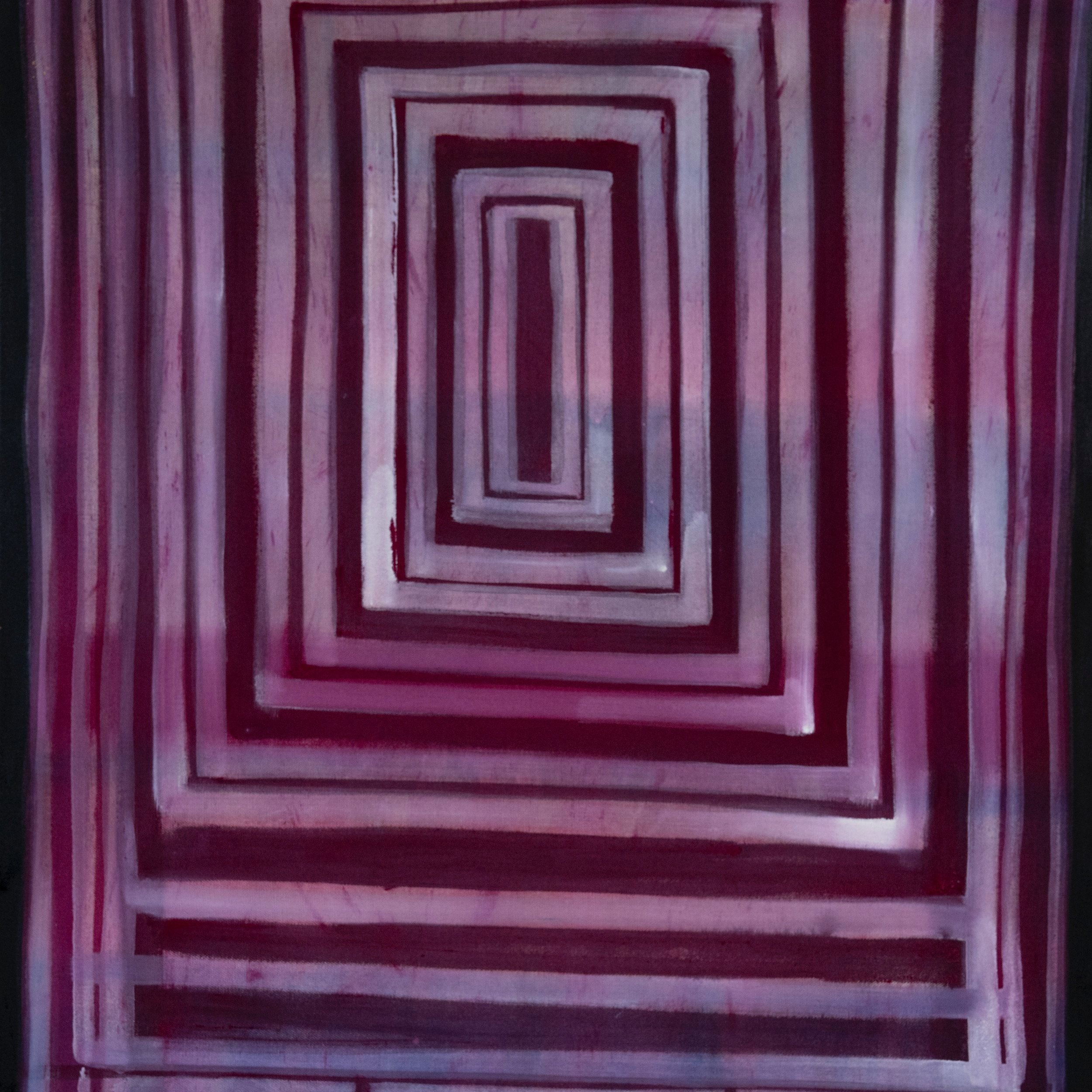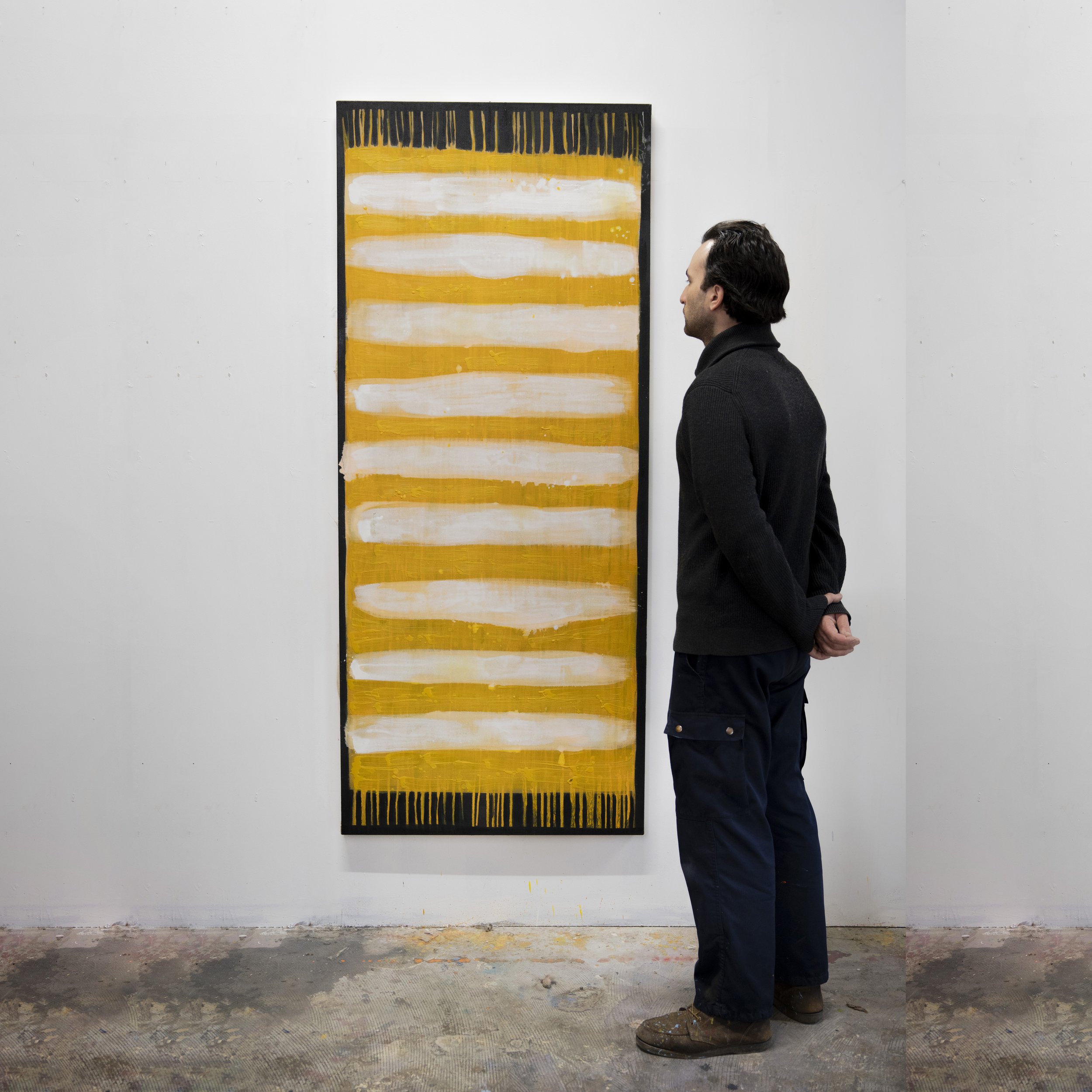Maxime Testu


Maxime Testu
Tapis orange
Pigments, acrylique
2024
H 210 x L 80 cm
Orange carpet
Pigments, acrylic
2024
H 210 x W 80 cm
Maxime Testu a intégré le motif du tapis dans son travail après avoir entamé une recherche sur les outils agricoles et les objets quotidiens qui ont marqué son enfance à la campagne, et qu’il a présentés lors de son exposition « Une Pastorale » en 2024. En modifiant leurs proportions et en les travaillant avec des lavis de couleurs encadrés de lignes au fusain, il amène notre regard à redécouvrir des formes pourtant familières. Leurs dimensions nous incitent presque à les oublier en tant qu'objets. C’est précisément ce phénomène que l’on retrouve dans son approche du tapis.
Le langage pictural qu'il déploie est simple : le motif émerge grâce au pinceau plat, le spalter, qui trace des bandes de couleur dont la largeur est déterminée par les outils du peintre. Ces motifs se résument à une alternance de largeur, longueur et orientation de lignes. Le dessin semble ainsi abstrait. Ce n’est qu’un dernier détail qui transforme cette œuvre en tapis : à la bordure du tableau, le contour à franges noires transforme une peinture all-over, sans bord ni centre, en un objet domestique familier. Ces surfaces planes réinterrogent notre relation à la ligne, comme le soulève Tim Ingold en opposant la ligne du tissage, issue de l'entrelacs de fils qui forment une surface plane, à la trace laissée par le passage ou le retrait de la matière. Le tapis noué se compose de fils entrelacés, tandis que le tapis peint naît de la trace laissée par le pinceau et l’encaustique.
Maxime Testu incorporated the carpet motif into his work after researching the farming tools and everyday objects that marked his childhood in the countryside, and which he presented in his exhibition “Une Pastorale” in 2024. By altering their proportions and working with colored washes framed by charcoal lines, he leads our gaze to rediscover forms that are nonetheless familiar. Their dimensions almost make us forget them as objects. It's precisely this phenomenon that we find in his approach to carpets.
The pictorial language he deploys is simple: the motif emerges thanks to the flat brush, the spalter, which traces bands of color whose width is determined by the painter's tools. These motifs are summed up in alternating widths, lengths and orientations of line. The drawing thus appears abstract. It is only one final detail that transforms this work into a carpet: at the edge of the painting, the black fringed outline transforms an all-over painting, without edge or center, into a familiar domestic object. These flat surfaces reinterrogate our relationship to line, as Tim Ingold points out by contrasting the line of weaving, resulting from the interlacing of threads that form a flat surface, with the trace left by the passage or withdrawal of material. Knotted carpets are made up of interwoven threads, while painted carpets are born of the traces left by brushes and encaustic.












